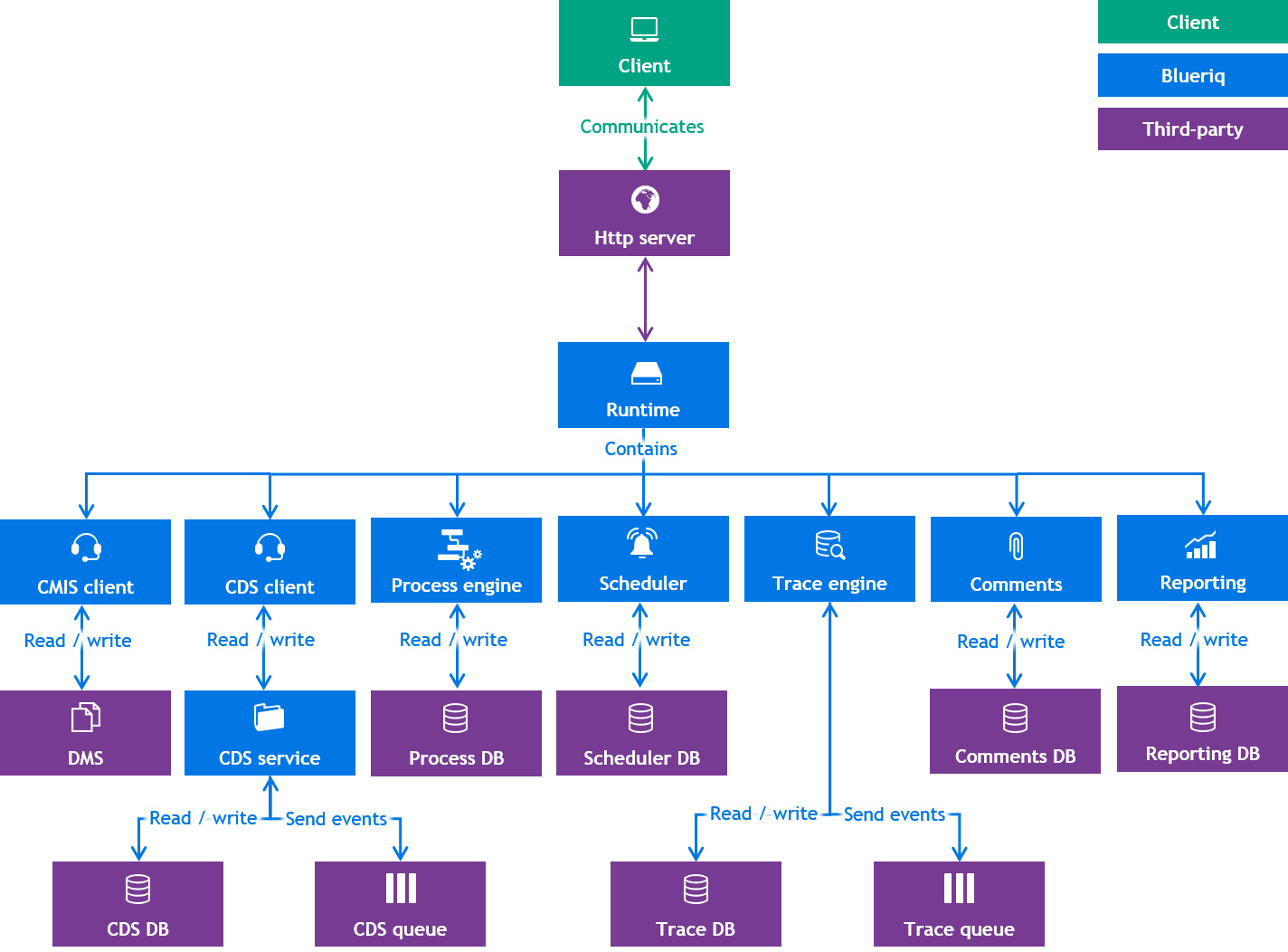You are viewing the documentation for Blueriq 17. Documentation for other versions is available in our documentation directory.
Table of contents
Runtime
The Runtime is the execution platform that executes applications built with Studio. There are several ways to load applications in the Runtime:
- Via a direct link between Studio and Runtime (typical for Development environments)
- By placing an application export in a designated folder
- By using the Publisher
Sessions
When an application is started for the first time the Runtime loads the XML file, caches it and creates a Runtime session. The next time the application is started, the session is created from the cache. When the cache is reloaded, existing sessions are kept alive and remain unchanged, but new sessions use the new definition.
The Runtime sessions are stored on the HTTP session which enables having multiple sessions at the same time. The sessions are kept alive as long as the user's browser is open, and sessions are removed when the HTTP session expires (by default after 5 minutes).
Configuration
Home folder
Blueriqs configuration is stored in the
spring.config.additional-location-Dspring.config.additional-location= and environment variables. Note that a spring.config.additional-locationProperty files
The Runtime can be configured via property files in the
spring.config.additional-locationPlugins
Blueriq has several plugins out of the box that extend the functionality of the Runtime. An example of a standard Blueriq plugins is the Development plugin which provides the dashboard/debugging functionality.
Plugins can be used to create a library (JAR/DLL) that contains custom components like services, containers, rules etc.
Every plugin should have an aquima-plugin-context.xml in its root, which is a Spring configuration file that is initialized on startup.
When a plugin is changed, added, or removed, the Runtime needs to be restarted or “Reload configuration” should be clicked on the development dashboard.
On the Blueriq dashboard one can also inspect which components are registered via the “Show server annotated beans” in the Server Tools widget (enable via Widgets, and check Server Tools).
